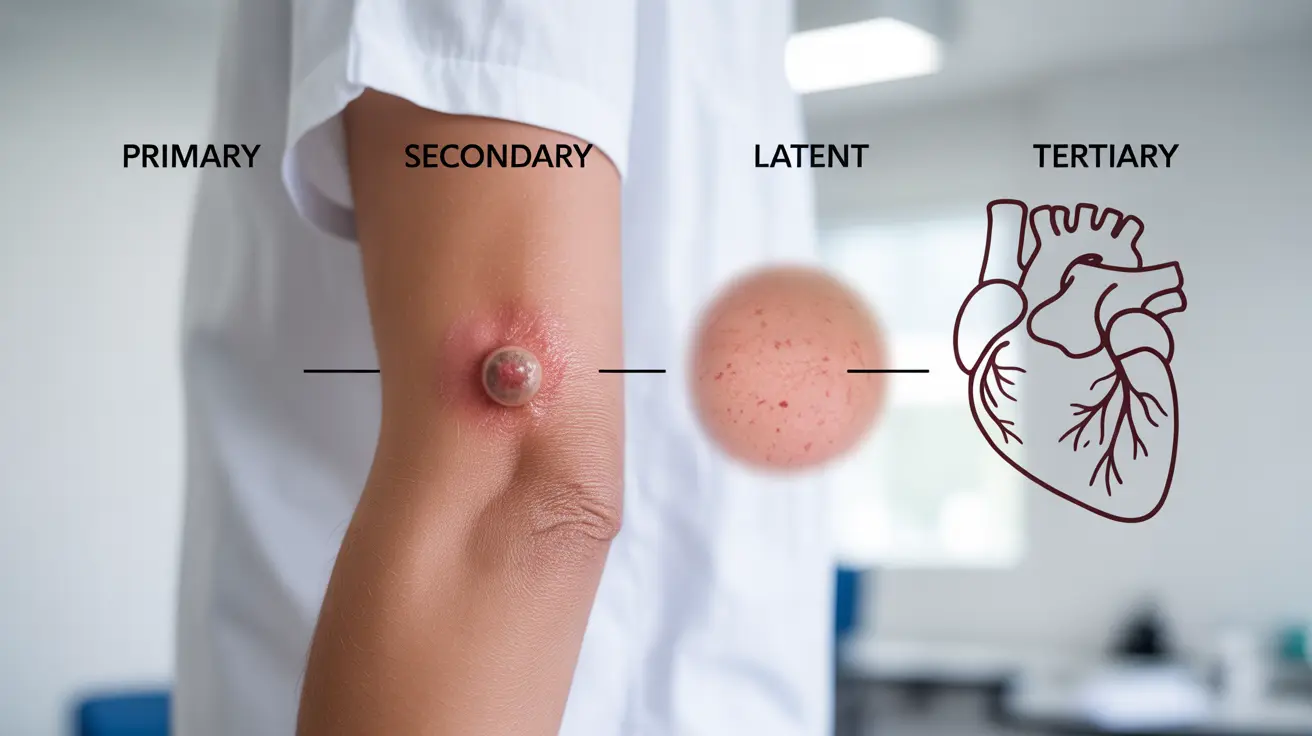Syphilis is a serious bacterial infection that requires prompt medical attention. This sexually transmitted infection (STI) can cause significant health complications if left untreated, but with early detection and proper medical care, it can be effectively cured. Understanding its symptoms, progression, and treatment options is crucial for protecting your health and preventing transmission to others.
While syphilis rates had declined significantly in the past, recent years have shown concerning increases in cases across various age groups and demographics. This resurgence makes it more important than ever to be informed about this infection and its impact on health.
The Stages of Syphilis and Their Symptoms
Syphilis progresses through distinct stages, each with characteristic symptoms:
Primary Stage
The first sign typically appears 3-4 weeks after exposure. The primary symptom is a painless sore (chancre) at the infection site, usually on the genitals, rectum, or mouth. This sore will heal on its own within 3-6 weeks, even without treatment, but the infection remains in the body.
Secondary Stage
If untreated, the infection advances to the secondary stage, characterized by:
- Skin rashes, especially on palms and soles
- Fever and fatigue
- Swollen lymph nodes
- Muscle aches
- Weight loss
Latent Stage
Without treatment, syphilis enters a latent phase where visible symptoms disappear, but the infection remains. This stage can last for years or even decades.
Tertiary Stage
The most serious stage can develop 10-30 years after initial infection, potentially causing:
- Damage to major organs
- Neurological problems
- Vision loss
- Heart disease
Diagnosis and Testing Methods
Accurate diagnosis of syphilis involves several testing options:
- Blood tests to detect antibodies
- Direct examination of sores during early stages
- Cerebrospinal fluid tests for suspected neurosyphilis
Healthcare providers typically start with a blood test and may recommend additional testing based on symptoms and stage of infection.
Treatment and Recovery
The primary treatment for syphilis is antibiotics, specifically penicillin. The type and duration of treatment depend on the stage of infection and extent of complications. Early-stage syphilis usually requires a single injection of penicillin, while later stages may need multiple doses over several weeks.
After Treatment Care
Follow-up testing is essential to ensure the infection has been cleared. Patients should:
- Complete all prescribed medication
- Abstain from sexual activity until fully cured
- Ensure all sexual partners are notified and tested
- Attend follow-up appointments for monitoring
Prevention Strategies
Preventing syphilis transmission involves multiple approaches:
- Using condoms consistently during sexual activity
- Regular STI testing, especially if sexually active with multiple partners
- Open communication with sexual partners about STI status
- Avoiding sexual contact if you or your partner has symptoms
Frequently Asked Questions
What are the most common symptoms of syphilis, and how do they change as the infection progresses?
The earliest symptom is a painless sore (chancre) at the infection site. As the disease progresses, symptoms can include skin rashes, fever, swollen lymph nodes, and muscle aches. Later stages may show no symptoms but can eventually lead to serious organ damage if untreated.
How is syphilis diagnosed, and what tests are used to confirm if I have it?
Syphilis is primarily diagnosed through blood tests that detect antibodies. During early stages, healthcare providers may also directly examine and test fluid from sores. Additional tests may be needed if neurosyphilis is suspected.
What are the treatment options for syphilis, and is a complete cure possible with antibiotics?
Syphilis can be completely cured with antibiotics, typically penicillin. The specific treatment plan depends on the stage of infection, but early detection and treatment result in the best outcomes. Alternative antibiotics are available for people allergic to penicillin.
How can I prevent syphilis, and does using condoms fully protect against transmission?
While condoms provide significant protection, they may not cover all areas where syphilis sores could be present. Prevention includes consistent condom use, regular testing, honest communication with partners, and avoiding sexual contact with infected individuals or those showing symptoms.
Can syphilis be passed from a mother to her baby, and what are the risks if it happens during pregnancy?
Yes, syphilis can pass from mother to baby during pregnancy or delivery, potentially causing serious complications or death. Pregnant women should be tested early in pregnancy and treated immediately if positive to prevent transmission to the baby.




